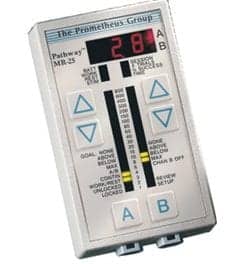By Brittan West
As the ICD-10 transition rests its fingertips just on the horizon, ill preparation for its arrival can result in a variety of consequences for physical therapy facilities. Chief among them are claim denials and compliance issues.
Is Your Practice and Billing Software ICD-10 Ready?
Preparation to ensure clinic staff and billing software systems are ICD-10 ready can help quell fears of any negative impacts on reimbursement. Such preparation is key, particularly as “experts are predicting that we could see denial rates increase by over 100%, claim error rates jump by 80%, and account receivable days increase by over 20%. Physical therapy practices can help mitigate these risks by adequate preparation, including ensuring that their software is ICD-10 ready,” explains Kim Rushton, director of Product Management – Therapy at Birmingham, Ala-based company SourceMedical.
To this end, meeting ICD-10 head-on requires physical therapy practices to draw out a custom road map, with each step carefully trained on readying the practice ahead of time.
“I think the first step is for staff to meet and understand the basics of ICD-10 regardless of software,” points out Daniel Morrill, PT, DPT, CEO, TheraOffice powered by Hands On Technology Inc, Westmont, Ill.
“I also think it is important to understand the anatomy of an ICD-10 code, how it relates to delivery of care, and what will happen on October 1, 2015 when the ICD-10 requirements go live. Once staff has a basic understanding, it is important to determine internal procedures and workflow, which should also take into consideration the software you are using,” Morrill adds.
The American Physical Therapy Association (APTA) website reinforces Morrill’s words, stating that all staff that work with the current ICD-9 system must be trained on the ICD-10, such as clinicians, front desk staff, and coding/billing staff.1
In addition to planning now for staff training, states Rev-Ignition, Temecula, Calif, physical therapy practices may possibly consider upgrades to their software. Practice administrators should also begin now to create their custom road map for the practice to ensure they are ICD-10 ready, the firm adds.
Yet, developing an understanding of how to code using ICD-10 is not something that will happen overnight—for clinics or vendors. “That’s why both parties need to work together and commit to investing both time and resources into ensuring that all parties are ready for the new code set. Otherwise, the consequences could be dire: denied claims, delayed payments, underpayments, and angry patients and customers—all of which can sink a business,” Heidi Jannenga, founder and COO, WebPT, Phoenix, says.
[sidebar float=”right” width=”250″]Product Resources
The following companies also provide billing software and practice management solutions:
1st Providers Choice
www.1stproviderschoice.com
Billing Dynamix
www.billingdynamix.com
BMS Practice Solutions
www.bmspracticesolutions.com
Clinicient
www.clinicient.com
ClinicSource
www.clinicsource.com
Compulink Business Systems
www.compulinkadvantage.com
Mavenlive
www.mavenlive.com
Mediware Infomration Systems
www.mediware.com
MW Therapy by MerlinWave
www.mwtherapy.com
OptimsPT
www.optimispt.com
Planetrehab
www.planetrehab.com
PracticeAdmin
www.practiceadmin.com
Practice Perfect EMR + Management Software
www.practiceperfectemr.com
PT Practice Pro
www.ptpracticepro.com
PTOS/Patterson Medical
www.ptos.com
Quick Notes
www.qnotes.com
Raintree Systems Inc
www.raintreeinc.com
Rev-Ignition
www.rev-ignition.com
SourceMedical
www.sourcemed.net
SpectraSoft
www.spectrasoft.com
Therabill
www.therabill.com
therapyBOSS
www.pragmait.com
TherAssist Software LLC
www.therassist.com
TheraOffice powered by Hands On Technology
www.theraoffice.com
WebPT
www.webpt.com[/sidebar]
Testing and Preparation
In addition to the many components that help keep practices afloat, testing software systems prior to the compliance deadline can help practice owners stay the course toward success. Don B. Tanner, director of Operations, Planetrehab Inc, Lafayette, La, notes that it is important to test now, as this allows clinicians to “work with your software vendors on correcting any errors that occur in testing. Secondly, you want to test and begin implementing and familiarizing your facility staff with ICD-10 codes and structures. You may also find that you need to expand your databases that hold ICD codes, or you may also need to convert ICD-9 to ICD-10 codes within your current database.”
As with all preparation linked to ICD-10, immediate action to facilitate this conversion before the October 1 deadline is imperative. Becoming knowledgeable of the specific rules regarding how and when to use ICD-10 is also essential. If practices have not tested and learned how to use ICD-10 coding, “your cash flow is subject to great volatility,” Tanner says.
Communicating with Billing Software Vendors
The necessity for ongoing and open communication with software vendors is a shared sentiment among industry insiders in the billing software arena. Specifically, many of these experts also encourage practices to ask questions regarding a vendor’s readiness for ICD-10. Ensuring a vendor is ICD-10 ready now can allow for facilities to practice and set up transition in a functional time frame.
Eldad De-Medonsa, PhD, president of Billing Dynamix, which has locations in Clearwater, Fla, and Marlboro, NJ, urges practices to ask their vendors “how they have prepared for the ICD-10 updates, and make sure that these updates are all included in the software agreement.” A cloud-based system can also help offer immediate software updates and serve as an alternate to downloads, he adds.
Confirming the ability of the billing software vendor to prove ICD-10 compliance long before October is key, advises Jim Brannon, director of Sales and Business Development, PracticeAdmin, headquartered in Peachtree Corners, Ga.
“Beyond that, look for transition aids, such as cross-walking assistance with the new codes. Some PM companies can even provide outsourced data entry/coding services to augment the practice’s workflow while learning new coding during the transition,” Brannon says.
Aligning with billing software vendors through a shared line of communication and seeking additional resources allows practices the opportunity to position themselves for a smoother transition.
Changes to Expect
Among the changes clinics can expect in the midst of the transition, experts say, is that some payors may not be ready for the deadline. “In fact, not all payors have to make the switch,” points out Jerry Henderson, PT, vice president of Therapist Success, Clinicient Inc, Portland, Ore.
“This means that clinics must be prepared to support both ICD-9 and ICD-10 codes. We anticipate a much larger than normal number of claims processing errors for the first few months after adoption,” he notes.
As a result, practices will need to do their due diligence on ICD-10. “It’s critical that clinics prepare to understand the impact on how a therapist/coder will interact with the new codes and how the clinic’s system will interface/integrate the ICD-10s with other systems to ensure accuracy and completeness,” explains Shawn Hewitt, OTR/L, product manager of Rehab Solutions, Mediware Information Systems Inc, Chandler, Ariz.
Budgets for a practice related to education and training in the area of ICD-10 is another impact that should considered by practices during this transition, says Helene M. Fearon, PT, FAPTA, Fearon & Levine Consulting, Phoenix, Ariz, and OptimisPT, Murietta, Calif.
Other key practice impacts of ICD-10 include the identification of where and how diagnosis codes will be reported. Paperwork, electronic systems, and other processes, such as submitting reimbursement claims, identifying patient eligibility, getting prior authorization from a payor, reporting quality data, and more, may need to be updated to reflect the reporting of ICD-10 diagnosis codes.
An Expanded Code Selection
ICD-10 is comprised of two parts. The first is ICD-10-CM diagnosis coding, which is for use in all US healthcare settings, and the second, ICD-10-PCS inpatient procedure coding, is intended for use in inpatient hospital settings only. The first three characters of the ICD-10-CM code structure represents a category. The fourth to sixth characters represent etiology, anatomical site, or severity. A seventh character exists as an extension.2
While the workflow from the clinic and therapist will remain nearly the same, a clear difference will be that as the therapist goes to select the diagnosis code, there will be a much larger selection to choose from, explains Adam Fairbanks, director of National Accounts at the Upland, Calif-based company BMS Practice Solutions.
“This wider selection will allow the care provider to better describe the services they are providing and decrease the risk of denied services resulting from coding inconsistencies,” adds Steve Mackie, CEO, Optima Healthcare Solutions, Palm City, Fla.
This code expansion is expected to rise from roughly 14,000 ICD-9 code options to about 69,000 diagnostic codes, experts say.2 The expansion reinforces the need for another essential spoke in the rolling ICD-10 wheel: familiarization with the changes made.
“The biggest change will be in becoming familiar with the new codes,” states Andrea Cassese, director, Technology, Patterson Medical/PTOS Software, headquartered in Warrenville, Ill. “As you know, there isn’t a one-to-one translation for most of the codes, so practices need to identify their most frequently used ICD-9 codes and learn what changes when using ICD-10.”
Despite these changes, HealthIT Analytics reports that recent email newsletters from the Centers for Medicare and Medicaid Services (CMS) indicate there are certain aspects of the coding process that will not see much change with the advent of ICD-10. The use of CPT or HCPCS codes for outpatient and office procedures will not be affected by the ICD-10 switch. However, CMS reminds providers that ICD-10-PCS codes will be used for hospital inpatient procedures, just as ICD-9 codes are used for such procedures today. Also, CMS says, “ICD diagnosis codes are sometimes used to determine medical necessity regardless of care setting.”3
Billing Software Purchase Considerations
User-friendly features rank among the top qualifiers when it comes to purchasing billing software, particularly as ICD-10 materializes. It is important to select a software system that eases navigation through the additional codes clinicians will have to select from.
“It is equally important that a billing system has the capability to send both ICD-9 and ICD-10,” explains Temecula, Calif-based company Raintree Systems Inc.
“Since some insurance companies may not be ready to accept the ICD-10 codes on October 1st, there will likely be a period of overlap. Having tools available to prevent bills being submitted if there is not an ICD-10 code assigned to the patient will assist in correcting issues early, and preventing rejections of claims. Also, consider if the vendor has the option to pre-select the ICD-10 code for a patient so, if needed, accounts can be updated prior to the changeover,” Raintree Systems says.
Simplicity and customization are included among the desired solution qualities during software purchases. Additional software features clinicians may want to consider, and that are shared recommendations by Jannenga and other industry insiders, include: clearing house selection; daily, weekly, and monthly reports; and integration with EMR solutions.
A billing system that is compliant with HIPAA Version 5010 transaction standards can also serve as a key necessity, according to Luke Sands, vice president of Sales, ReDoc by Net Health, Pittsburgh. He recommends that practices verify whether their EMR captures ICD-10 codes as needed for billing purposes, as well as whether the software has a crosswalk or look-up feature, and what means are embedded in the software searching for ICD-10 codes.
A track record of development and scalability are also among the features clinicians might consider having on their checklist when selecting billing software. Other features and benefits highlighted by Steven Presement, president, Practice Perfect EMR + Management Software, headquartered in Buffalo, NY, include: pre-submission claim scrubbing; EDI835 electronic payment remittance processing, integrated credit and debit card processing, automated modifier handling and CCI edits, programmable statements, invoices and receipts, as well as robust processing of incoming payments and balance transfers between payors.
Overall, “A billing program should improve workflow within your clinic and not add a layer of complexity, no matter how sophisticated,” Nelson Aviles, Sales manager, TherAssist, Highland, Ill, emphasizes.
“The vendor should be able to show that it has met and complied with any all regulatory changes, such as PQRS and the upcoming ICD-10 changeover. It should be able to readily and inexpensively accommodate your growth or changes in practice patterns,” Aviles adds.
The main feature and benefit for practices, notes Amy Orr, vice president of Sales at the North Miami, Fla-based company Ingenium Business Solutions Inc, would be that the software ultimately allows for a seamless transition, going from ICD-9 to ICD-10, and therefore allowing for no interruption to invoicing or reconciliation.
Benefits of Integrated Software
Another component to consider during purchases is integration, as noted by Cassese. More specifically, she points to “Integration with scheduling and documentation; reports—can they track the key metrics they need to run their business; [is] support and training available; [and] ease of use,” all of which can play a vital role during billing software purchases.
Integrated software is built to help clinicians keep pace with the evolving healthcare landscape. Its importance then, particularly as the ICD-10 transition approaches, is reinforced by the increasing necessity to save time, reduce errors, and optimize efficiency. Centralizing data allows for a single entry of patient data at once.
The concept of centralized data helps clinicians avoid “islands of data,” explains Sharif Zeid, business director, Wellesley, Mass-based MWTherapy by MerlinWave Inc.
It can help eliminate chances for data to be “lost or garbled in translation between systems. It also means no double-entry of data such as patient demographics or billing data and efficient and streamlined processes,” Zeid states.
Planning for Tomorrow’s Success Today
Partnering in planning with billing software vendors, and within the facility itself, can help spur a streamlined readiness for the transition across a physical therapy practice. It can also help carve the foundation for in-depth staff training and success for the practice, prior to the compliance deadline and beyond. PTP
Brittan West is managing editor of Physical Therapy Products. For more information, contact [email protected].
References
- American Physical Therapy Association. ICD-10. Available at: http://www.apta.org/Payment/Coding/ICD10/ Accessed May 25, 2015
- Centers for Medicare and Medicaid Services. ICD-10 Basics. What is different with ICD-10. Available at: http://www.roadto10.org/ Accessed May 27, 2015
- Bresnick J. CMS highlights need for ICD-10 preparation as deadline nears. HealthIT Analytics. Available at: http://healthitanalytics.com/news/cms-highlights-need-for-icd-10-preparation-as-deadline-nears/ Accessed June 1 and 2, 2015.





